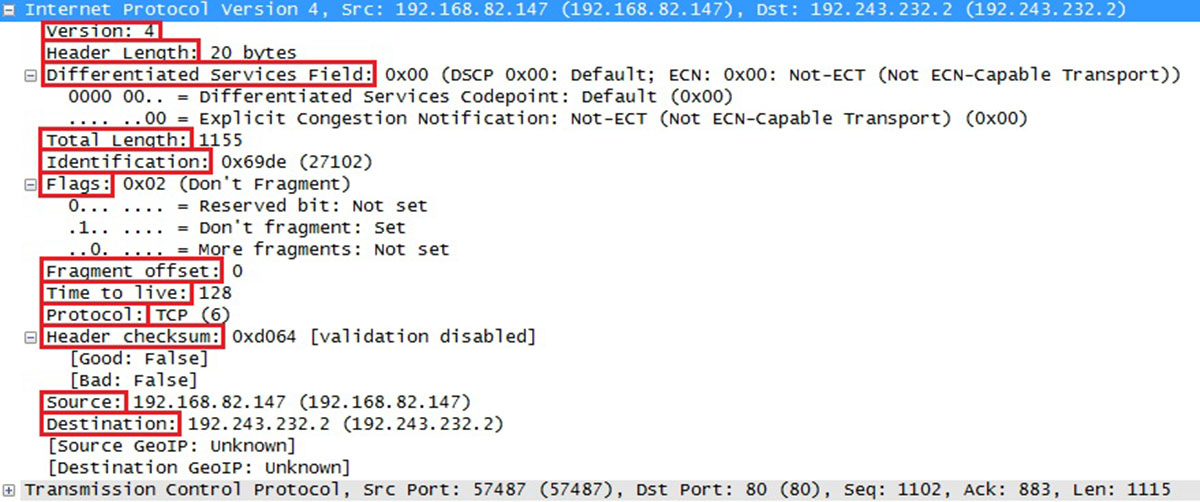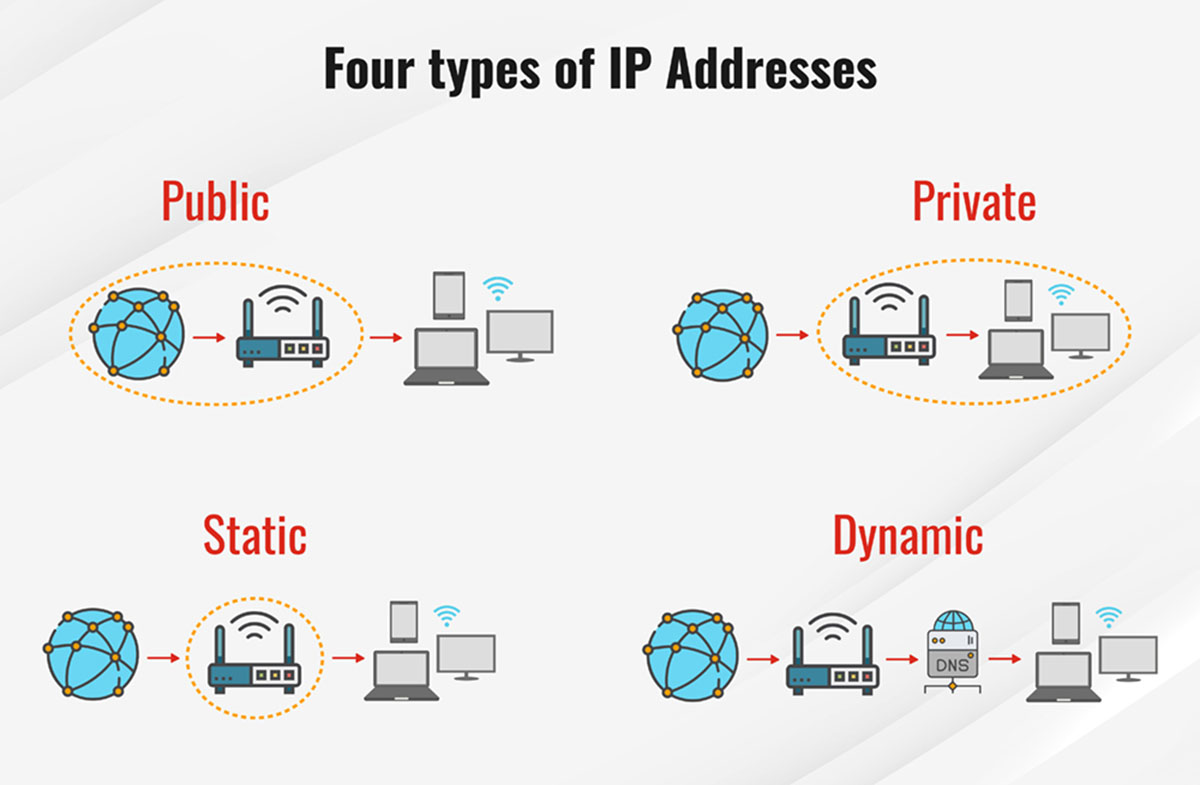Introduction
The Internet has become an integral part of our lives, connecting billions of devices across the globe. At the core of this vast network lies the Internet Protocol (IP), which enables the routing of data packets from one device to another. Specifically, IPv4 (Internet Protocol version 4) is the most widely used protocol for packet-switched networks.
When transmitting data using IPv4, each packet contains a header, which includes important information about the packet’s source, destination, and other details. The IP header plays a crucial role in ensuring the successful delivery of data packets in the network.
In this article, we will focus on a specific aspect of the IP header: the minimum IP header length. Understanding this concept is essential for network administrators, developers, and anyone involved in network infrastructure management.
By delving into the details of the minimum IP header length, we will explore how it impacts data transmission, network efficiency, and the overall performance of the Internet.
What is an IP Header?
The Internet Protocol (IP) header is an essential component of the IPv4 protocol. It is a fixed-length data structure that precedes the actual data payload in an IP packet. The header contains important information used by routers and other network devices to forward and deliver the packet to its intended destination.
The IP header includes several fields, each serving a specific purpose. These fields include the source IP address, destination IP address, protocol version, header length, time to live (TTL), and more.
The source IP address identifies the sending device, while the destination IP address signifies where the packet should be delivered. These addresses play a vital role in routing the packet across the network.
The protocol version field indicates whether the packet adheres to the IPv4 or IPv6 protocol. IPv4 packets have a value of 4 in this field.
The header length field specifies the length of the IP header in 32-bit words. This value is crucial for parsing the header correctly and determining the start of the payload data. The IPv4 header length can vary depending on the presence of optional fields.
The IP header also includes fields for handling fragmentation, differentiating between types of service (ToS), and checksum validation.
Understanding the structure and content of the IP header is essential for network administrators and developers. It enables them to analyze and troubleshoot network issues, optimize data transmission, and ensure the smooth flow of information across the network.
IPv4 Header Structure
The IPv4 header consists of 20 bytes or 160 bits and is organized into several fields, each serving a specific purpose. Let’s explore each of these fields in more detail:
- Version: This 4-bit field indicates the IP protocol version being used, with IPv4 having a value of 4.
- Header Length: This 4-bit field specifies the length of the IP header in 32-bit words. Since each word consists of 4 bytes, the minimum possible IP header length is 5 (5 x 32 bits = 20 bytes). However, if there are additional options present in the IP header, the header length can be greater.
- Type of Service (ToS): This field, also known as the differentiated services field, is used to prioritize IP packets based on a predefined set of rules. It allows for quality of service (QoS) differentiation, ensuring that certain packets receive higher priority over others.
- Total Length: This 16-bit field indicates the total length of the IP packet, including both the header and the data payload. The maximum total length that can be represented is 65,535 bytes.
- Identification: This 16-bit field is used for uniquely identifying each IP datagram. It typically increments with each new packet, allowing for reassembly of fragmented packets at the destination.
- Flags: This 3-bit field is used for fragmentation control. The flags include the “Don’t Fragment” (DF) flag, which indicates that the packet should not be fragmented, and the “More Fragments” (MF) flag, which indicates that more fragments of the original packet are to follow.
- Fragment Offset: This 13-bit field specifies the offset of the data contained in the current fragment relative to the original unfragmented packet.
- Time to Live (TTL): This 8-bit field represents the number of hops or routers that a packet can traverse before being discarded. It helps prevent indefinitely looping packets in the network.
- Protocol: This 8-bit field identifies the protocol in the transport layer that the IP packet will be handed off to once it reaches its destination. Common values include ICMP, TCP, and UDP.
- Header Checksum: This 16-bit field is used to verify the integrity of the IP header. It allows the receiving device to check whether the header has been corrupted during transmission.
- Source IP Address: This 32-bit field contains the IP address of the sending device.
- Destination IP Address: This 32-bit field contains the IP address of the intended recipient of the packet.
By understanding the structure and purpose of each field in the IPv4 header, network administrators and developers can effectively analyze and troubleshoot network issues, optimize routing, and ensure efficient data transmission across the network.
IP Header Length field
The IP Header Length field is a 4-bit field in the IPv4 header that specifies the length of the IP header in 32-bit words. This field is crucial for parsing and interpreting the header correctly, as it determines the starting point of the payload data and any optional fields that may be present.
The minimum possible value for the IP Header Length field is 5, which corresponds to a header length of 20 bytes (5 x 32 bits). This is because the IP header has a fixed length of 20 bytes for the mandatory fields. However, if there are additional optional fields present, such as options or padding, the overall header length can be greater.
The value in the IP Header Length field represents the number of 32-bit words that make up the header. To determine the actual length in bytes, the value in the IP Header Length field is multiplied by 4. For example, a value of 5 in the IP Header Length field results in a header length of 20 bytes (5 x 4 = 20).
It’s worth noting that the IP Header Length field refers to the length of the IP header only and does not include any additional data or payload that follows the header. The total length of an IP packet, including the header and payload, is indicated by the Total Length field in the IPv4 header.
The IP Header Length field is important for network administrators and developers as it enables them to properly analyze and process IP packets. By understanding the header length, they can accurately extract the necessary information from the header, calculate offsets, and perform operations on the payload data.
In summary, the IP Header Length field in the IPv4 header specifies the length of the IP header in 32-bit words. It plays a critical role in parsing the header correctly and handling IP packets in a network environment.
Minimum IP Header Length
The minimum IP header length in IPv4 is 20 bytes, or 5 words, as specified by the IP Header Length field. This fixed length includes the mandatory fields required for proper routing and delivery of IP packets.
The minimum IP header length of 20 bytes consists of fields such as the version, header length, type of service (ToS), total length, identification, flags, fragment offset, time to live (TTL), protocol, header checksum, source IP address, and destination IP address.
The reason for this fixed minimum length is to ensure compatibility and interoperability across different network devices and protocols. By defining a standard minimum length, all network devices can process and interpret the IP header in a consistent manner.
Each field within the minimum IP header length serves a specific purpose. For example, the protocol field identifies the transport layer protocol that the IP packet will be handed off to upon arrival at the destination. The identification field provides a unique identifier for reassembling fragmented packets, if necessary. The source and destination IP addresses determine the origin and destination of the packet, respectively.
While the minimum IP header length is fixed at 20 bytes, it’s important to note that the overall packet size can vary. The total length field in the IP header indicates the complete size of the IP packet, including both the header and the payload. The payload can range in size from zero bytes to a maximum of 65,515 bytes.
Understanding the minimum IP header length is crucial for network administrators and developers. It enables them to properly analyze and process IP packets, allocate appropriate buffer sizes, and ensure efficient data transmission across the network.
Furthermore, by adhering to the minimum IP header length, network devices can optimize their processing power and memory utilization. This standardization allows for effective and seamless communication between various network elements, contributing to the overall efficiency and reliability of the network.
Implications of minimum IP Header Length
The minimum IP header length of 20 bytes in IPv4 has several implications for network administrators and developers. Understanding these implications is crucial for ensuring efficient data transmission and network performance.
Efficient Memory Allocation: The fixed minimum IP header length allows network devices to allocate memory resources efficiently. Since the length is standardized, devices can allocate a fixed-sized buffer for processing incoming IP packets, reducing memory wastage and optimizing resource utilization.
Consistent Header Parsing: By adhering to the minimum IP header length, network devices can consistently parse and interpret the headers of IP packets. This standardization ensures that devices from different vendors can accurately process IP packets and eliminates compatibility issues.
Quick Header Parsing: With a fixed header length, devices can quickly locate the payload data within the IP packet. The minimum header length of 20 bytes allows for easy calculations and offsets, resulting in faster processing times and efficient routing of packets.
Network Efficiency: The fixed minimum IP header length contributes to the overall efficiency of the network. By standardizing the header length, unnecessary variations are eliminated, leading to faster packet processing and reduced overhead. This, in turn, helps to optimize network performance and throughput.
Effective Routing Algorithms: Network routers rely on the IP header to determine the best path for packet forwarding. The fixed minimum IP header length ensures that routing algorithms can accurately extract routing information, such as source and destination IP addresses. This allows routers to make informed decisions and efficiently route packets to their intended destinations.
Interoperability: The minimum IP header length facilitates interoperability between different network devices, protocols, and systems. By adhering to the standard length, devices can communicate seamlessly, regardless of their manufacturers or underlying technologies. This interoperability is crucial for the smooth operation of global networks.
Security Considerations: The fixed IP header length simplifies security protocols and packet inspection mechanisms. Security systems can rely on the standardized header length to extract necessary information and perform deep packet analysis accurately. This aids in the detection and prevention of network threats and vulnerabilities.
Future Protocol Compatibility: While IPv6 has been introduced as the successor to IPv4, the minimum IP header length remains the same. This ensures backward compatibility, enabling devices to handle both IPv4 and IPv6 packets seamlessly. It also simplifies protocol migration and eases the transition to IPv6 in the long run.
In summary, the minimum IP header length of 20 bytes in IPv4 has numerous implications for network efficiency, header parsing, routing algorithms, security protocols, and future compatibility. Understanding these implications helps network administrators and developers optimize network performance and ensure seamless communication across diverse network environments.
Conclusion
In conclusion, the minimum IP header length in IPv4 is a fixed 20 bytes or 5 words, as specified by the IP Header Length field. This length ensures a standardized structure for IP packets, allowing for efficient processing, routing, and interoperability across different network devices and protocols.
Understanding the minimum IP header length is essential for network administrators and developers. It enables them to properly analyze and interpret IP packets, allocate appropriate buffer sizes, and optimize resource utilization. By adhering to this standard, network devices can efficiently process headers, locate payload data, and route packets accurately within the network.
The minimum IP header length also has implications for network efficiency, quick header parsing, effective routing algorithms, security considerations, and interoperability. It contributes to the overall efficiency and performance of the network, ensuring seamless communication between devices from various vendors, and simplifies security protocols and packet inspection mechanisms.
Furthermore, the fixed minimum IP header length in IPv4 facilitates backward compatibility with IPv6, easing the transition to the newer protocol in the future and ensuring compatibility with legacy systems.
By understanding and harnessing the implications of the minimum IP header length in IPv4, network administrators and developers can ensure the smooth flow of data, optimize network performance, and enhance the overall efficiency and reliability of their networks.

























